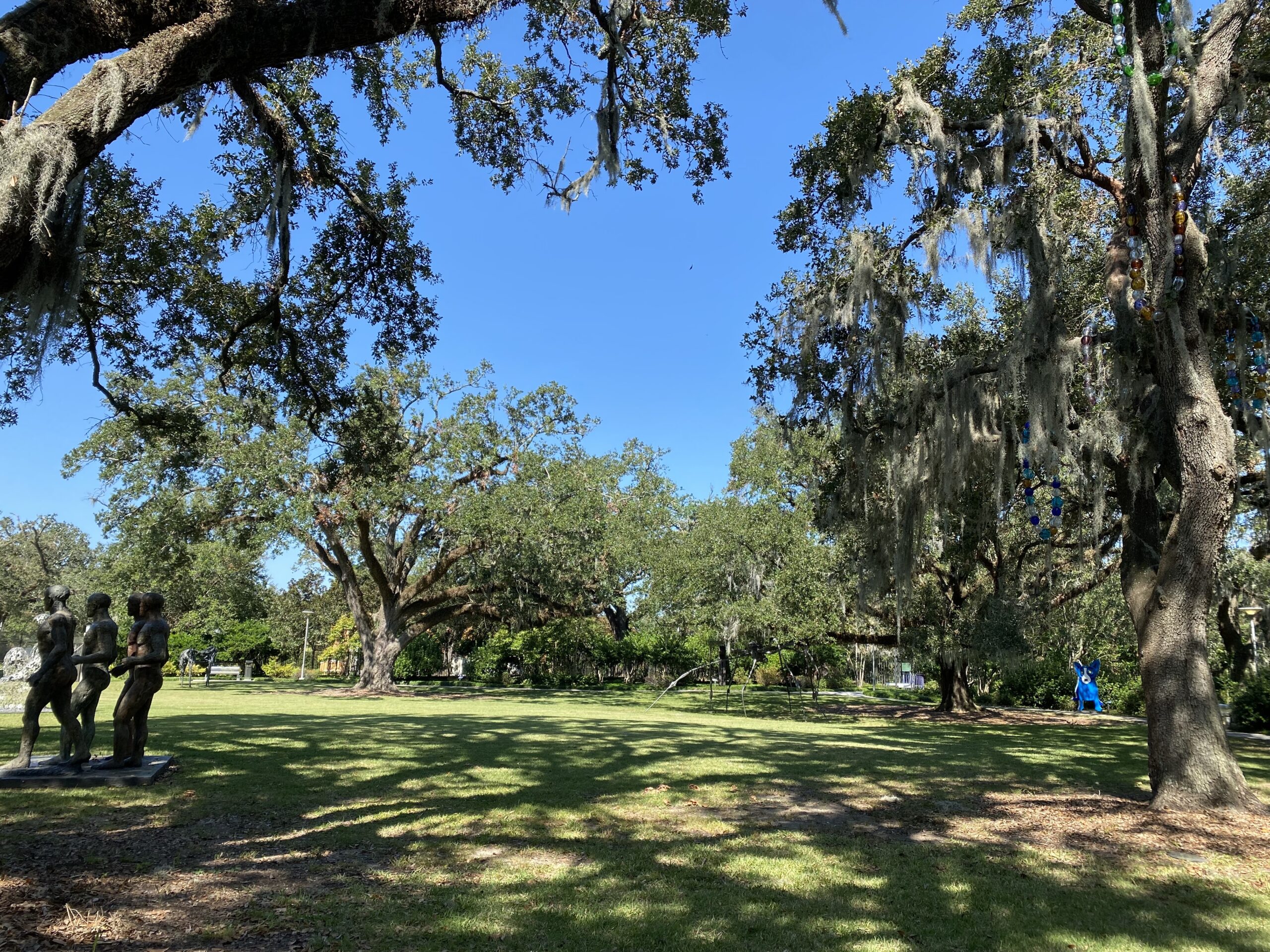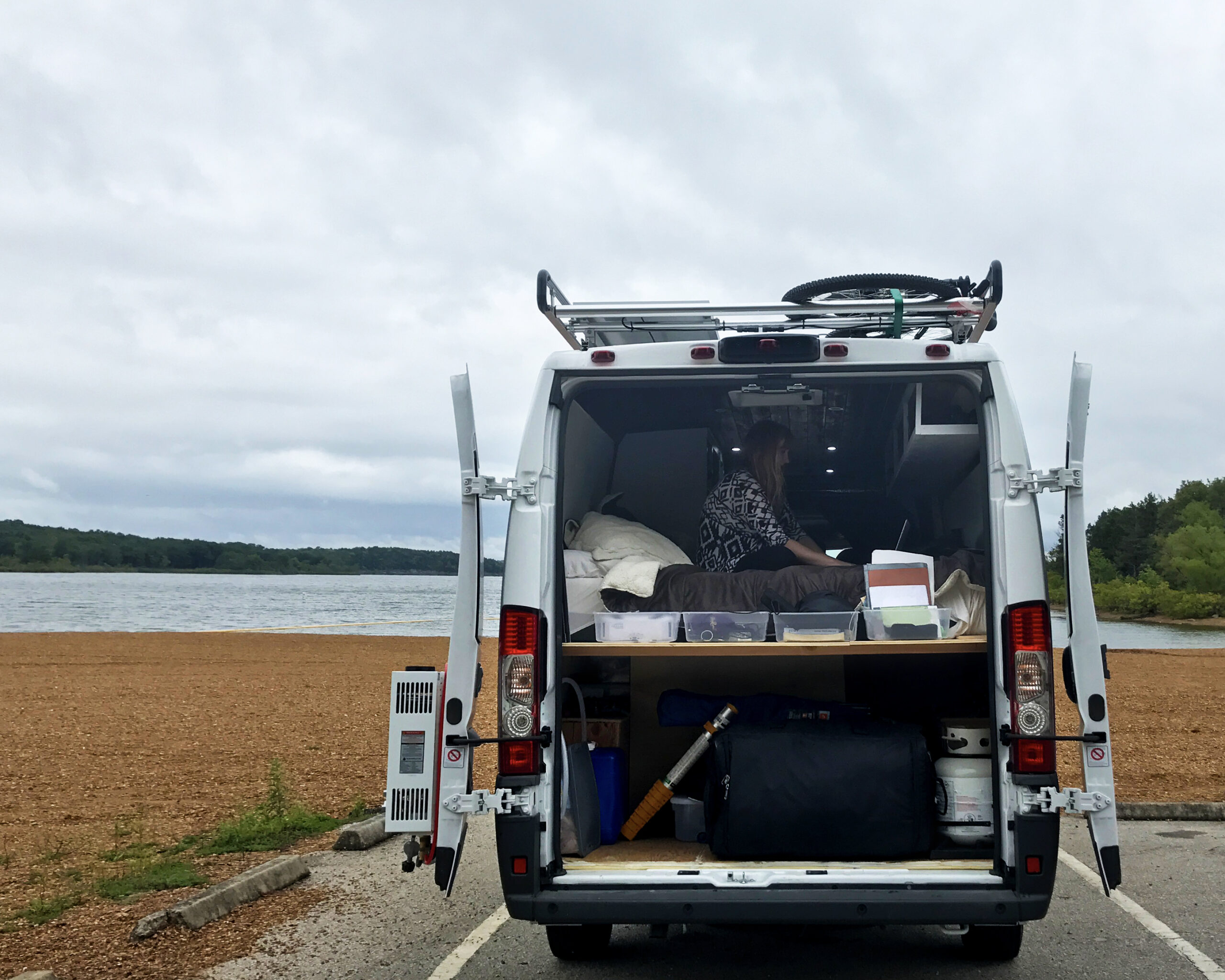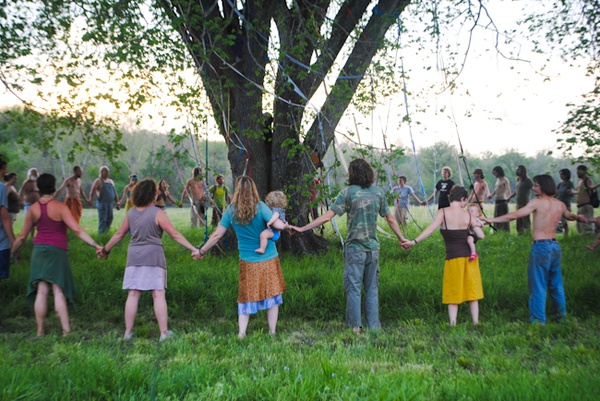
Open space in the garden. (Photo by: Elizabeth Byer)
Most people in the United States eventually try to “settle down,” as the media continues to extoll the virtues of a sedentary life with a nuclear family in the suburbs. To some, however, this seems like a particularly limiting social constraint. Why miss out on Boston because you have to live in Colorado? Why avoid Grand Teton when your base of operations is Del Boca Vista, Florida? A good place to start when trying to answer the question of how to live without geographic boundaries is looking at those who already do so—people living from place to place, with no permanent home. For these people, the decision to live nomadically is a result of many factors.

This is a Ram Promaster 3500 that has been converted into a dwelling. (Photo by: Budenhob)
Across the United States, different people have different ways of hitting the road. In his article “The Agony and Ecstasy of Living on the Road,” Chris Moody interviews several people who have taken to living in vans and recreational vehicles. These people generally have a few things in common—some money saved up, either a past career or a remote job, and a growing distaste for the constraints of capitalist life in the unappetizing and unattractive suburbs. Even though these people live in their individual vehicles, Moody describes a feeling of community between travelers. They often share resources and advice, ranging from how to repair and upkeep your vehicle to the best spots to park and sleep around the country. For van dwellers, taking life onto the road is the most easily accessible option outside of owning a stationary dwelling. To them, this life offers reduced expenses and a more rewarding community.

A lot of people reject the expense of the suburbs. (Photo by: Jenna Karic)
The problem suburbia poses isn’t purely an aesthetic one—hordes of people wouldn’t be fleeing if that was the only issue at hand. For many, it is financially impossible to live in the suburbs, an issue that has its roots in the core of suburban planning. Robert Fishman’s “Bourgeois Utopia: Visions of Suburbia” traces the history of suburban planning and the economic divide in historic Europe. He describes how suburbs were designed to relocate the lower classes out of cities like London and Paris and into surrounding land. Many of those who live nomadically do so out of a rejection of this social order: living outside of the mainstream grants a sense of greater autonomy and greater personal freedom, with the added benefit of money saved, meaning greater independence within the capitalist system.
Some, however, may not be as well off as the van dwellers when they decide to diverge from suburbia. The gutter punks of Chicago’s Wicker Park are an example. The group is loosely composed, with members coming and going as they please, but a crowd assembles at the park in Chicago each summer. They come from across the country, having spent the rest of the year traveling either by foot or train car, working odd jobs and getting by through the community they’ve built. They lack a unified structure, but a hallmark of their operation is their connectedness and community—resource sharing is critical to ensuring the well-being of each gutter punk. While perhaps more motley than the van dwellers, the gutter punks exhibit what might be the most important aspect of living a geographically boundaryless life: maintaining a strong communal spirit.

Community is vitally important to a nomadic lifestyle. (Photo by: Eastwindblog.co)
Nothing is more crucial to living a geographically boundaryless life than community. This may seem paradoxical, as a large part of beginning a nomadic life is constant movement and change. However, for every existing example of a nomadic community, having compatriots to provide support is incredibly necessary. Having a strong community is not only important for fiscal and food-based cooperation, but it also provides the all-important social ties that are necessary for human existence. Leaving behind the suburbs (and other forms of mainstream dwelling) leaves one without a set group to establish social ties. However, leading a nomadic life means you can choose the group you want to build a life with. Where someone might be dissatisfied with the neighbors in a suburb, that same person could pack up an RV with a few close friends and start anew on the road. For gutter punks and van dwellers alike, living a geographically boundaryless life would be nearly impossible without help from others.
This piece was edited by Lily Plowden as part of Professor Kelley Crawford’s Digital Civic Engagement course at Tulane University.
 NOLAbeings Multimedia artist Claire Bangser created NOLAbeings as a portrait-based story project that marries...
NOLAbeings Multimedia artist Claire Bangser created NOLAbeings as a portrait-based story project that marries...  Voodoo in New Orleans: Reviving history: New Orleans fortune telling This article takes a deep dive into the history of Voodoo in New Orleans, its hybridization with Catholicism, and its present-day place in the city's culture. The author visits fortune-tellers in the French Quarter, using their guidance as a tool for introspection rather than a deterministic predictor of the future. Through her experiences in New Orleans, the author feels a mystical connection to both the past and the future.
Voodoo in New Orleans: Reviving history: New Orleans fortune telling This article takes a deep dive into the history of Voodoo in New Orleans, its hybridization with Catholicism, and its present-day place in the city's culture. The author visits fortune-tellers in the French Quarter, using their guidance as a tool for introspection rather than a deterministic predictor of the future. Through her experiences in New Orleans, the author feels a mystical connection to both the past and the future. 